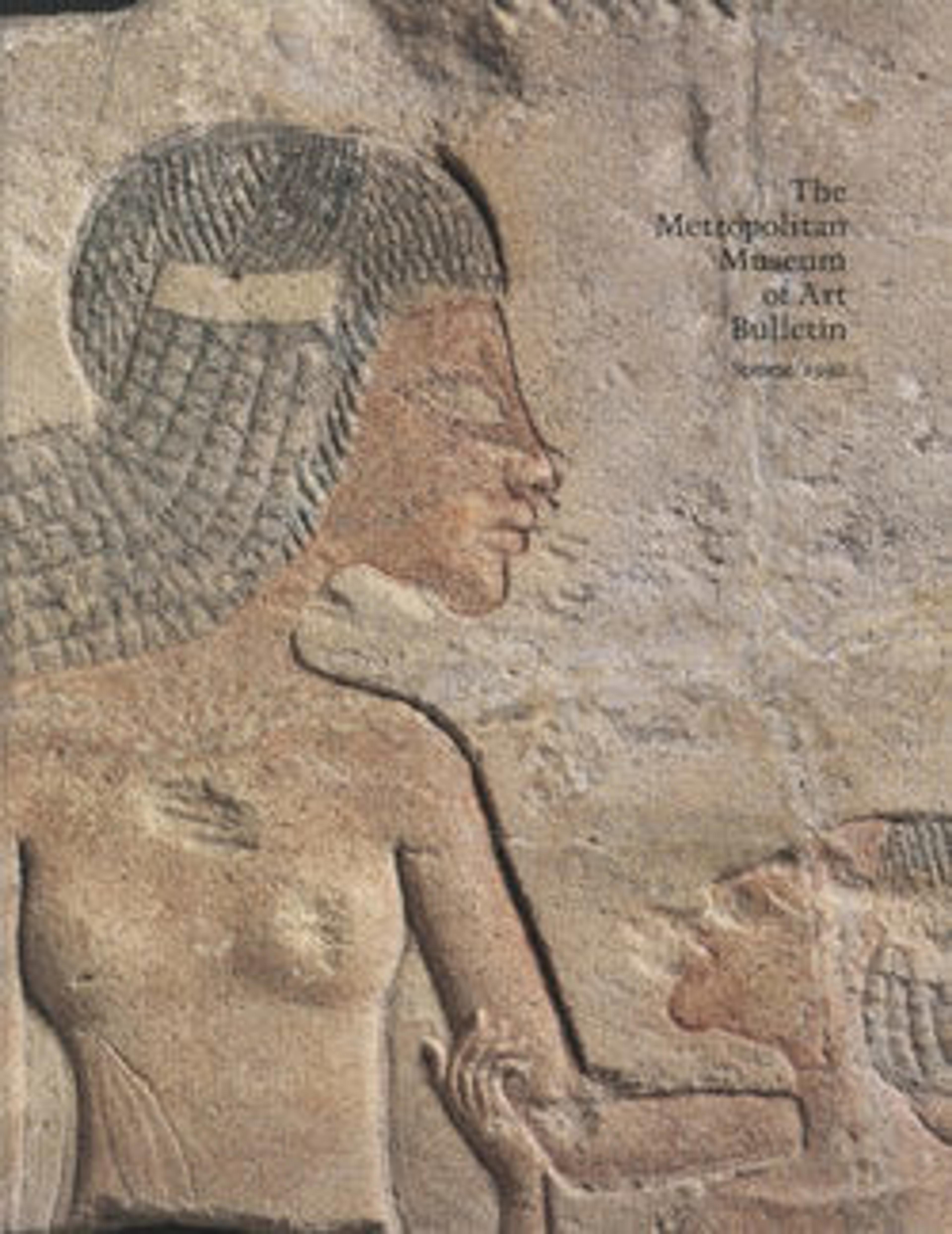Rhyton terminating in a horned lion
This ceramic vessel is called a ‘rhyton’ (from the Greek rheo, meaning ‘flow through’) by scholars because it has a spout at the bottom. Like many rhyta, it consists of a horn-shaped beaker and a hollow sculptural element, in this case in the form of the foreparts of a winged lion with horns that are now missing. The lion’s legs are outstretched – including its hind legs with are depicting in shallow relief on the sides of the beaker – suggesting that the creature is running or leaping. The spout is in the lion’s chest. The beaker and the sculptural element were made separately of a dark grey clay. Originally it was painted, but now the only preserved color is inside the mouth, which is painted red.
Rhyta originated in the Achaemenid Persian Empire, combining the older Near Eastern traditions of animal-headed beakers and Iranian traditions of animal-shaped vessels. They were used at royal banquets, where the Persian king displayed his wealth and power, and the ability to drink skillfully from a rhyton marked one as a member of the elite who were invited to such banquets. Rhyta were thus symbols of high status, and this in turn inspired the creation of imitations in less expensive materials, such as clay.
Rhyta originated in the Achaemenid Persian Empire, combining the older Near Eastern traditions of animal-headed beakers and Iranian traditions of animal-shaped vessels. They were used at royal banquets, where the Persian king displayed his wealth and power, and the ability to drink skillfully from a rhyton marked one as a member of the elite who were invited to such banquets. Rhyta were thus symbols of high status, and this in turn inspired the creation of imitations in less expensive materials, such as clay.
Artwork Details
- Title:Rhyton terminating in a horned lion
- Period:late Achaemenid–early Seleucid
- Date:ca. 4th–3rd century BCE
- Geography:Anatolia
- Culture:Achaemenid or Seleucid
- Medium:Ceramic
- Dimensions:Height: 12.00 in. (30.48 cm); Diameter of rim: 5.00 in. (12.70 cm); Height of protome: 5.50 in. (13.97 cm); Width at paws: 2.91 in. (7.40 cm)
- Credit Line:Gift of Norbert Schimmel, 1981
- Object Number:1981.133
- Curatorial Department: Ancient West Asian Art
More Artwork
Research Resources
The Met provides unparalleled resources for research and welcomes an international community of students and scholars. The Met's Open Access API is where creators and researchers can connect to the The Met collection. Open Access data and public domain images are available for unrestricted commercial and noncommercial use without permission or fee.
To request images under copyright and other restrictions, please use this Image Request form.
Feedback
We continue to research and examine historical and cultural context for objects in The Met collection. If you have comments or questions about this object record, please contact us using the form below. The Museum looks forward to receiving your comments.
